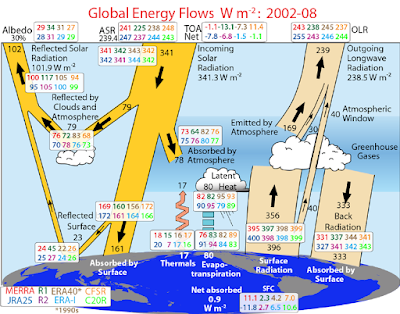From researchgate.net, a diagram showing how the total amount of radiation received at the Earth's surface is more than incoming solar radiation:

Fair enough, this implies that day time temperatures are higher because of The Greenhouse Effect. Seems plausible. If you don't think about it for more than a few seconds.
Problem is, it ignores facts.
Our Moon is the same distance from The Sun as we are. "When sunlight hits the moon's surface, the temperature can reach 260 degrees Fahrenheit (127 degrees Celsius). When the sun goes down, temperatures can dip to minus 280 F (minus 173 C)." (from here. That's a day-night range of 300C. Why is this? It is because our Moon has no atmosphere.
Earth's surface is warmer by day and cooler by night, there's no official adjusted average for day-night range (different for dry deserts vs humid cities) but let's go with 10C to 20C? So daytime average 20C and night time 5C, or something like that?
So the actual Greenhouse Effect is far stronger at night, when the Earth's surface is 178C* warmer than our Moon's.
The flip side of this is that the Earth's is 107C* cooler than our Moon's surface during the day - exactly when these clever charts tell us that the surface is warmer than it would be without The Greenhouse Effect.
Back to the drawing board, lads! Maybe redo those charts to explain why The Greenhouse Effect cools the surface of the Earth during the day? (You can't, it's as logically impossible as what the above chart is trying - and clearly failing - to explain).
* Sure, on average the Earth's surface is about 35C warmer than our Moon's surface. That's because we have an atmosphere, full stop, regardless of its constituent gases.
